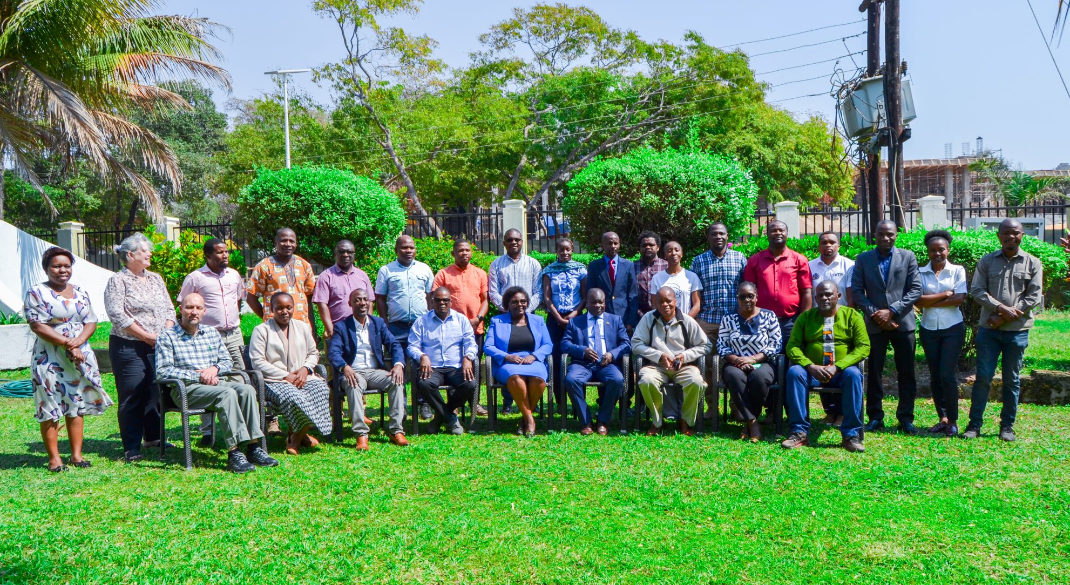SBAPP regional project courts freshwater experts

Posted By
James MphandePosted on
27th Aug, 2024
In its efforts to map all biodiversity ecosystems in Malawi, the Spatial Biodiversity Assessment, Prioritisation and Planning (SBAPP) project between August 20 and 23, 2024, held a consultative meeting with freshwater experts to discuss how best to come up with parameters for freshwater ecosystem types and ecological condition mapping.
The development followed successful mapping of the terrestrial ecosystem types where stakeholders noted a glaring gap for a similar exercise targeting freshwater ecosystems.
With a focus on Lake Malawi, the meeting also delved into Malawi’s major rivers and wetlands.
Facilitating the workshop were three experts from South Africa (Stephen Holness, Nancy Job and Thuli Mahlangu).
The workshop also had two scientists from Tanzania (Nestory Gabagambi) and Mozambique (Carlos Jonasse) who are involved in biodiversity related research on their sides of the lake and they were brought in to share their country experiences from similar exercises or projects.
With this consultative approach, the project sought to come up with a system of mapping freshwater ecosystems and ecological condition that is agreeable to all stakeholders and captures major areas of interest in biodiversity management.
Speaking when he opened the workshop, Director of Fisheries, Dr Hastings Zidana said the approach of engaging partners in the sector and involvement of foreign experts will help Malawi to not only come up with robust mapping system but also ensure that the system is acceptable beyond the country.
“We need to engage aspects of technology and innovation in our ecosystem types mapping systems. Previous attempts have been done without much consultations with each expert focusing on their area of interest but with this approach, the system to be developed will take care of several areas of concern,” said Zidana.
On his part, Director of Research and Outreach at Malawi University of Science and Technology (MUST), Professor Alfred Malawi, said the SBAPP team in Malawi wants to come up with products that are not only acceptable but can also influence policy.
He said previously biodiversity mapping was done without much sustainability mechanisms but the multisectoral approach engaged this time ensures not only ownership but skills transfer for continued improvements to the maps through regular reviews.
“If we speak with one voice, we stand a better chance of being heard by the authorities instead of us speaking to them as individual voices. We need to establish what is on the ground and devise mechanisms for interventions that are informed by reliable data,” he said.
At the end of the session, participants came up with a prioritised list of factors to consider when collecting data for mapping the freshwater ecosystems types and ecological condition mapping.
The SBAPP project, implemented in Malawi jointly by MUST and the Environmental Affairs Department, is also being implemented in South Africa, Mozambique and Namibia.
The South African National Biodiversity Institute (SANBI) is the regional coordinator for this five-year SBAPP project with funding coming from the French Development Agency (AFD) and the French Facility for Global Environment (FFEM).
The project aims to develop and/or enhance national spatial biodiversity assessments, prioritisation and planning processes and products in order to strengthen the national knowledge base on biodiversity; and ensure this knowledge informs land use planning and decision making, assists with the development of environmental policy and strategies, and provides a basis for future biodiversity monitoring.
All the four implementing countries have a substantial number of shared species and ecosystem types across their borders, making regional cooperation vital for mapping and assessment processes.
According to the project, few African countries currently have spatial data on biodiversity to enable them to make informed decisions and policies on land use planning and biodiversity protection in their National Biodiversity Strategy and Action Plan (NBSAP), a requirement for parties to the Convention on Biological Diversity (CBD).With the pending need to report against the international goals and targets in the Kunming-Montreal Global Biodiversity Framework, it is essential that countries use relevant and adequate tools to define ambitious and achievable biodiversity-related objectives.
In the SBAPP processes, a number of key datasets (maps of ecosystem types and ecological condition; or species distribution maps and population-level information) can be used in conjunction with international standards from the IUCN to produce useful headline indicators on the state of biodiversity – the Red List of Ecosystems and the Red List of Species.
These assessments are then used to spatially identify priority areas for biodiversity conservation and ultimately inform land use planning processes. In addition, the processes can identify sites that are important for biodiversity globally through Key Biodiversity Areas (KBAs) identification.
Since biodiversity is not distributed evenly across the landscape or seascape, and neither are the pressures that act on it, it is important to have a systematic, defensible and spatially explicit approach, based on the best available science, to assess the state of biodiversity and decide on priority areas for action.
The development of SBAPP products, and their endorsement and mainstreaming into decision making is an iterative and ongoing process.
South Africa, Mozambique, Namibia and Malawi all had begun some aspects of SBAPP processes prior to the project. The project, therefore, supports associated capacity building so that SBAPP products can be further developed in the countries in future.
The SBAPP project hopes that information produced through spatial biodiversity assessment processes has multiple applications for biodiversity strategies and action planning at a national scale, such as informing national target setting processes or identifying national priority areas for biodiversity conservation and management.
The SBAPP information is crucial for mainstreaming biodiversity requirements into other sectors, and informing land use and development planning at national and sub-national scales.
The SBAPP processes produce maps, graphs, datasets and analyses that communicate the state of biodiversity in national reports. These outputs also allow countries to monitor progress towards international goals and targets, such as those in the Global Biodiversity Framework and the Sustainable Development Goals.
Previous